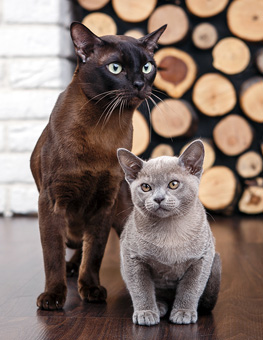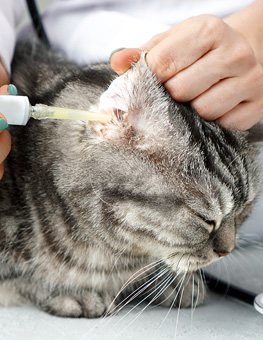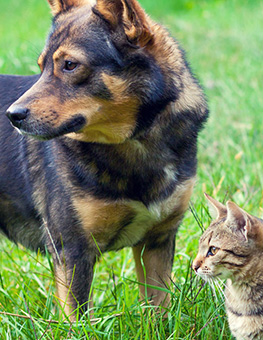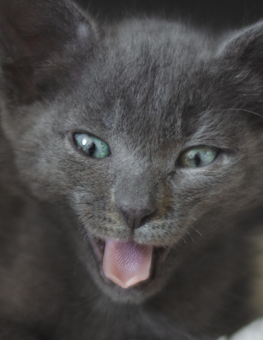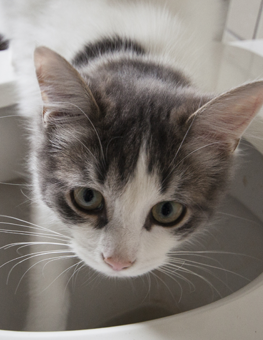How to Control Your Cat’s Shedding
Do all cats shed? Yes. Shedding is a natural, healthy process in all cats. Normal cat shedding helps to replenish your kitty’s fur and keep it in tip-top shape – basically, there is no way around it.

All cats shed, no matter if they have short hair or long hair.
But dead, loose hair, when left on the cat, could cause skin irritation. We’ll tell you the science behind why cats shed, the breeds that shed the least, and how to clean up all that fur, help reduce hairballs and keep your cat’s shedding under control.
Do All Cats Shed the Same?
All cats shed, no matter if they have short hair or long hair (other than, of course, hairless cats such as the Sphynx cat – but see below). However, an indoor cat’s shedding cycle isn’t as distinct as that of a cat who lives outdoors. Outdoor cats will typically shed more heavily in the spring, since the light and weather trigger their body to shed the thicker, heavier coat they developed to protect themselves during the cold winter. Indoor cats shed more consistently due to being exposed to indoor lighting and more consistent temperatures. Since we use air conditioning and heating, the cat’s system gets tricked and they often shed constantly year-round.
Which Cats Don’t Shed a Lot?
Don’t be fooled by how long your cat’s hair is. Whether he has short hair or long hair, they can still shed the same amount. However, there are three breeds that don’t shed as much. The Cornish Rex has short, curly hair that lies close to the body and the Devon Rex has curly fur that is a very thin coat. Because of their rather short and fine fur, their shedding is not usually as noticeable or extreme, but is still present. And finally, do hairless cats shed? Technically, the hairless Sphynx cat does not shed. These cats don’t have traditional hair but rather a fine down coat similar to peach fuzz. However, don’t be fooled. For those suffering from cat allergies, it is still possible to be allergic to hairless cats. Their skin also creates a lot of excess oil and they need frequent bathing, or else they’ll leave brown stains behind on your furniture!
How Do I Control and Clean Up Cat Shedding?
Cats spend about 10 percent of every day grooming, which means that shedding is just a part of life. There are a few things you can do to reduce the amount of hair flying around:
- Examine your cat’s diet. Some cat foods are harder to digest than others and can impact the health of your cat’s skin and coat. Look for food high in Omega 3 and 6, which softens the coat and skin and reduces shedding.
-

The more fur you remove by brushing, the less will be stuck to you, and it's great for bonding with your cat.
Groom your cat every day. The more fur you remove, the less will be stuck to you and your furniture. The Hartz® GROOMER’S BEST® Fur Fetcher® for Cats removes three times more fur than brushing alone. Brushing your cat can be a great bonding experience, too!
- Keep your cat from excessively grooming himself so you can tackle his flying fur yourself. Try distracting him with a toy like the Hartz Cattraction with Silver Vine & Catnip® Animal Pal Kicker™ Cat Toy or the Hartz Just For Cats® Kitty Caster™ Cat Toy
- If your cat’s shedding is truly out of control, you should consult your vet. Also consider using Hartz® Groomer’s Best® Hairball Control Shampoo. Our special conditioning formula aids in reducing hairballs by gently washing away excess, loose hair, making brushing easier.
- Protect your furniture with a slipcover or blanket that can easily be tossed in the wash.
- Dust and vacuum your house daily to avoid hair and help control allergies.
- Invest in a great lint brush to clean your furniture and clothing. Try stashing one at work, your car, or in your purse so you can de-lint yourself after stepping out of the house.
Even though almost all cats shed, handling your cat’s shedding doesn’t have to be a chore. Keep up with your kitty’s grooming with great Hartz products and follow our tips and tricks to keep your house clean and fur-free!









